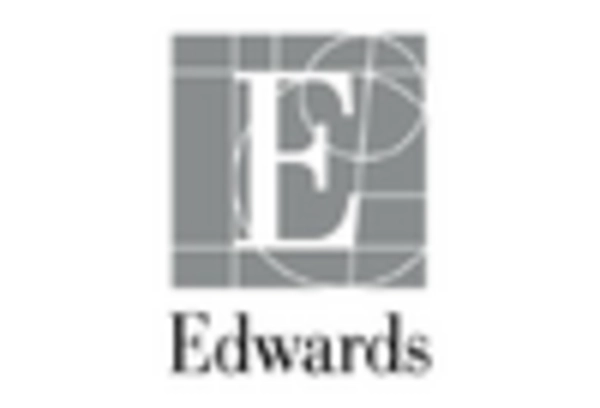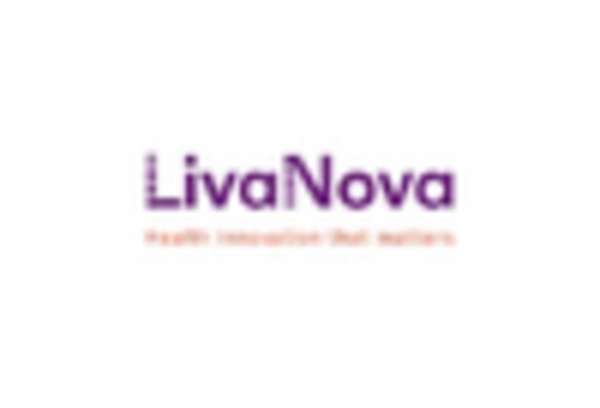Increasing Aging Population
The aging population in South America is a crucial driver for the heart valves market. As individuals age, the incidence of cardiovascular diseases tends to rise, leading to a higher demand for heart valve interventions. In South America, the population aged 65 and older is projected to reach approximately 12% by 2030, which may significantly impact healthcare services. This demographic shift necessitates advancements in heart valve technologies and surgical procedures, as older patients often require more complex interventions. The heart valves market must adapt to these demographic changes by developing innovative solutions tailored to the needs of elderly patients, potentially increasing market growth and revenue opportunities.
Rising Healthcare Expenditure
Healthcare expenditure in South America has been on the rise, which appears to positively influence the heart valves market. Governments and private sectors are investing more in healthcare infrastructure, leading to improved access to advanced medical technologies. For instance, Brazil's healthcare spending is expected to reach $200 billion by 2025, indicating a growing market for medical devices, including heart valves. This increase in funding allows for better training of healthcare professionals and the adoption of cutting-edge technologies, which may enhance patient outcomes. Consequently, the heart valves market is likely to benefit from this trend, as more patients gain access to necessary treatments.
Growing Awareness of Cardiovascular Health
There is a notable increase in awareness regarding cardiovascular health among the South American population, which serves as a significant driver for the heart valves market. Public health campaigns and educational initiatives are encouraging individuals to prioritize heart health, leading to earlier diagnosis and treatment of cardiovascular conditions. This heightened awareness may result in a greater demand for heart valve procedures, as patients seek timely interventions. Moreover, the heart valves market could see a shift towards preventive measures, with an emphasis on lifestyle changes and regular health check-ups, potentially reducing the burden of advanced cardiovascular diseases.
Advancements in Minimally Invasive Techniques
The heart valves market is experiencing a transformation due to advancements in minimally invasive surgical techniques. These innovations, such as transcatheter aortic valve replacement (TAVR), are gaining traction in South America, as they offer reduced recovery times and lower risks compared to traditional open-heart surgeries. The adoption of these techniques is likely to expand the patient population eligible for heart valve interventions, as many individuals may be hesitant to undergo more invasive procedures. As healthcare providers increasingly embrace these technologies, the heart valves market may witness substantial growth, driven by improved patient outcomes and satisfaction.
Regulatory Changes Favoring Medical Innovations
Regulatory changes in South America are fostering an environment conducive to innovation within the heart valves market. Authorities are streamlining the approval processes for new medical devices, which may accelerate the introduction of advanced heart valve solutions. For example, Brazil's National Health Surveillance Agency (ANVISA) has implemented measures to expedite the evaluation of innovative medical technologies. This regulatory support could lead to a surge in new product launches, enhancing competition and driving down costs for consumers. As a result, the heart valves market may experience increased investment and growth opportunities, benefiting both manufacturers and patients.


















Leave a Comment